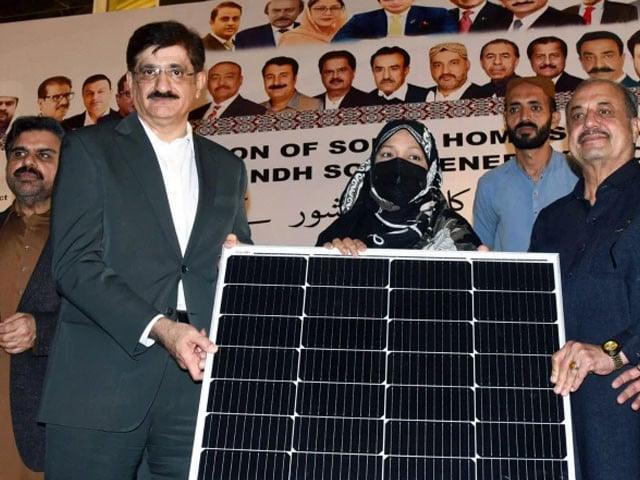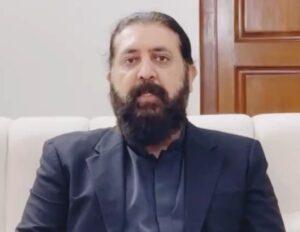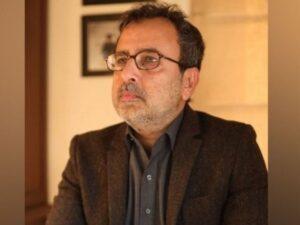The Sindh government began the distribution of solar house systems (SHS) at 200,000 low -income households from the province, as part of Sindh Solar Energy Project (SSEP).
Sindh-chief Minister Murad Ali Shah made this announcement during an event organized near Kpt Interchange, Dha Phase-I, where he also confirmed that the president of the PPP, Bilawal Bhutto-Zardari, had ordered the purchase of 300,000 additional solar units for distribution between low-income families.
“Thanks to this initiative, we provide solar energy solutions to low -income households, allowing them to improve their quality of life, access better education for their children and improve their businesses,” said Shah.
Solar house systems will be distributed with important subsidies, which makes them more affordable for families in need. Each system includes a robust solar panel, an 80 W solar panel, an intelligent power management unit, a durable battery and essential accessories such as LED bulbs, mobile load installations and a pedestal fan.
During its speech, the CM also underlined the challenges that the Sindh government faces in the renewable energies sector, in particular in the development of the Thar coal project.
Despite the setbacks of federal government and financial constraints, the provincial government has remained determined to extend renewable energy sources.
Shah noted that in 2014, the Sindh government made a daring step by solary 600 schools in Nagarparkar and launching two solar energy programs in Sukkur. However, the federal government’s refusal to approve additional electricity projects has hampered new progress.
“We faced an important opposition when we tried to introduce solar energy into the country. However, despite the challenges, we continued with our efforts to ensure that the Sindh meets its energy needs,” he said.
The CM also discussed the success of the Thar Coal Project, which began to generate the cheapest electricity in Pakistan. He credited the former Asif president Ali Zardari for his efforts to ensure federal cooperation and ensure the completion of the project.
“We are proud that Thar Coal now plays a key role by providing affordable energy to Sindh and the country in general,” he added.
The Sindh government is also working with the federal government to develop a railway line dedicated to the transport of Thar coal, further strengthening the energy autonomy of the province.
In addition, the Sindh government has teamed up with Chinese companies to develop hybrid-solitary energy projects, focusing on the 350 MW and 75 MW diagrams, which were finalized during the recent visit by Asif Ali Zardari in China.
The CM has reaffirmed the government’s commitment to provide 300 free electricity units per month to low -income families, aligning with the PPP manifesto and the Sustainable Development Goals (SDGs).
He expressed hope that the objective of distributing 200,000 SHS kits by July 2025 would be achieved, with a target of 400 kits per district per week.
The Minister of Energy, Nasser Shah, stressed that the SHS kits are also distributed in the 30 Sindh districts. Distribution is facilitated using NGOs established like Hands, SRSO and SEFCO, guaranteeing the effective delivery of kits.
He also noted that beneficiaries are carefully selected using data from the Benazir income support program (BISP), ensuring that the most needy families have priority.
The CM concluded by praising the work of the Sindh and team energy department, declaring that the province is determined to open the way to the transition to clean energy, with the support of the World Bank and other international development partners.
“Sindh Solar Energy Project is a crucial step towards a greener and fair future,” he added.




